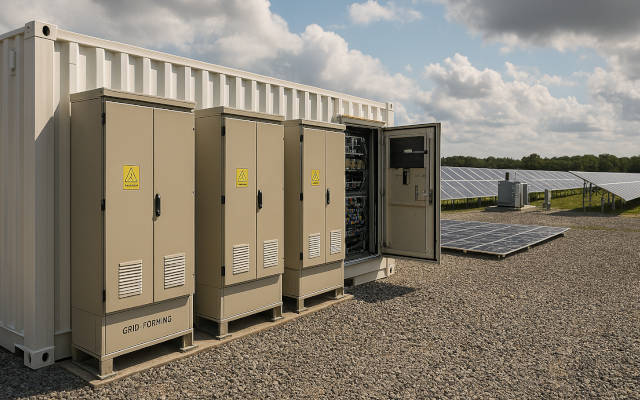Grid-Forming Inverters: The Silent Architects of Renewable Stability

AI-generated image of grid forming inverters
By EVWorld Si Editorial Team
As the global energy transition accelerates, grid-forming inverters are emerging as the unsung heroes of power system resilience. Unlike traditional grid-following inverters, these devices actively shape voltage and frequency, enabling renewables and storage to behave like conventional synchronous generators. Their deployment marks a pivotal shift in how we stabilize increasingly decentralized grids.
What sets grid-forming inverters apart is their ability to set—rather than follow—grid parameters. They offer black start capability, inertia emulation, and autonomous voltage control, allowing solar, wind, and battery systems to anchor grid stability even in the absence of fossil-based generation. This isn’t just a technical upgrade; it’s a foundational reimagining of how power systems operate.
Major players in this space include Siemens Energy, SMA Solar Technology, and EPC Power, each offering distinct platforms tailored for utility-scale deployment. Siemens integrates grid-forming logic into HVDC and STATCOM systems, while SMA’s battery inverters have already proven themselves in projects like Blackhillock in Scotland. EPC Power, meanwhile, has carved out a niche in North America with its modular CAB1000 platform, designed for high-density solar and storage applications. GE, Hitachi Energy, and ABB are also advancing grid-forming capabilities, particularly in hybrid and microgrid environments.
Behind the electronics lies a quiet but critical story of materials. Silicon and silicon carbide form the backbone of high-speed switching transistors, while copper and aluminum are indispensable for busbars, heat sinks, and chassis design. Rare earth elements like neodymium and dysprosium may appear in magnetic components or cooling systems, depending on the architecture. And while lithium and nickel aren’t part of the inverter itself, they’re central to the battery systems that often operate in tandem—making grid-forming deployments a strategic node in the broader energy materials supply chain.
From an investment standpoint, the market is gaining momentum. Valued at roughly $788 million in 2024, grid-forming inverter sales are projected to double by 2032, driven by rising demand for renewables, microgrid deployment, and government mandates for grid resilience. Publicly traded firms like Siemens, SMA, and ABB offer direct exposure, while clean energy ETFs such as ICLN and TAN increasingly include companies developing grid-forming technologies. Private equity and infrastructure funds are also circling the space, especially where inverter deployments are tied to storage and transmission upgrades.
Grid-forming inverters are not just technical instruments—they’re strategic infrastructure. As utilities and governments push for decarbonization, these devices are becoming indispensable to a future where renewables dominate and grid stability is no longer tethered to combustion. Their rise marks a quiet revolution, one that’s reshaping the physics, economics, and politics of power.
Original Backlink
Views: 1331
Articles featured here are generated by supervised Synthetic Intelligence (AKA "Artificial Intelligence").
